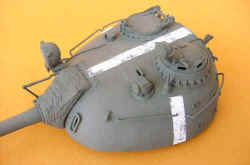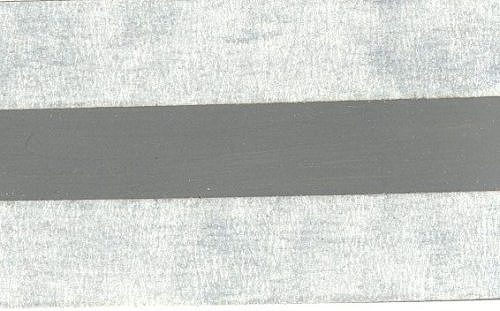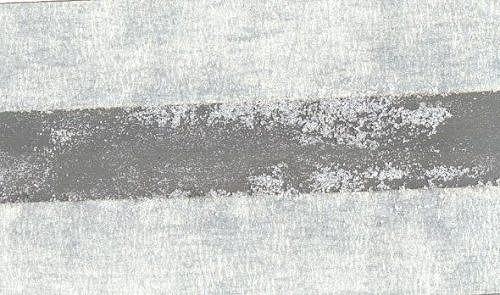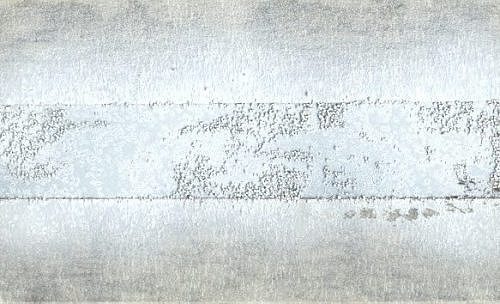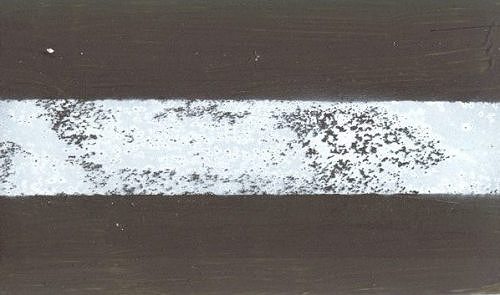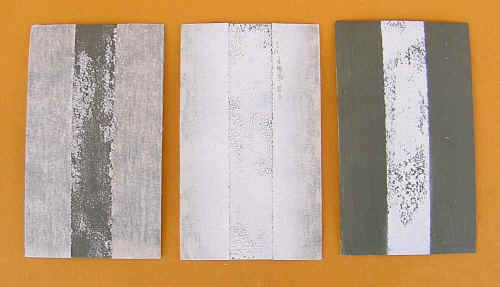|
Legal Notice
No material from Modeler Site any Web site owned, operated, licensed, or controlled by Mario Covalski & Associated may be copied, reproduced, republished, uploaded, posted, transmitted, or distributed in any way, except that you may download one copy of the materials on any single computer for your personal, non-commercial home use only, provided you keep intact all copyright and other proprietary notices. Modification of the materials or use of the materials for any other purpose is a violation of Mario Covalski & Associated's copyright and other proprietary rights.
Read More here > Legal notice
Sometimes a simple trick allows us to get a finishing that otherwise it would take us many hours of work. This is an easy technique that you can take on with excellent chances of success. Try it!
It's based on the use of salt as mask, and it allows you to give the appearance of the chipped paint over any flat surface of a vehicle. The idea is to let the base color ( which can be of any other color, priming or naked metal), show through the last coat applied.
Step 1
In this case I wanted to simulate the weathering of the "bands" of the Soviet invasion vehicles so weather worn in Berlin´45 and Praga´68.These bands were painted with brushstrokes using washable paint, that’s the reason why they suffered a serious weathering as it can be seen in wartime photos.
|
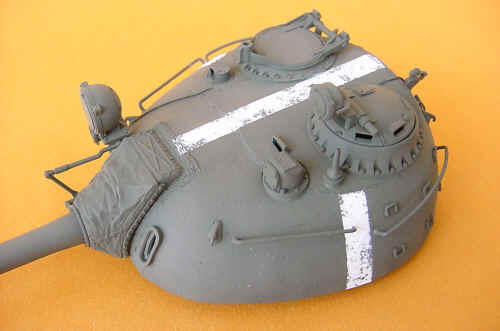
|
|
Tamiya T-55, under construction by the author
|
The first step was to paint all the vehicle on the base color, that’s to say that the paint of the invasion bands has been chipped off to expose the base color underneath. I chose dark green as base color.
Step 2
Once the base paint was thoroughly dry and all the weathering of the green color (paneling, preshading, and so forth) was made, I masked using masking tape the area on which the invasion bands would be painted.
Step 3
Then I moistened it subtly, this is the most critical stage, because if we moisten it too much, the salt will be dissolved by the water, and if we moisten it little the salt won't remain stuck to the model. So you should moisten the surface until getting a shinny look, avoiding the water to accumulate too much.
Over this moistened area, I applied salt abundantly, covering all the area, letting it dry during several minutes, removing the surplus. If this task was well done, you'll notice that too much salt have stuck on the model, so you'll have to remove the surplus again using a hard brush.
Once the work has been finished, you will appreciate green color on the area we left salt, and white color on the area the salt have been removed.
Step 4
Once I was happy with the amount of salt stuck to the model, I painted all the area in white. It's better to use thick or dense paint because if the paint is very diluted, the salt will get wet and will come off.
The white coat should be very thin and one or two coats of paint will be enough. Take into account that the airbrush pressure will certainly make some salt come off the area, so my advice is to leave more salt than necessary as I told you on step 3.
Step 5
I let the paint dry for half an hour and masked it off. Don't touch the salt!!
Only after the paint has rested over 24 hours, I brushed the salt using an old toothbrush. I realized that the salt was more stuck than expected, moreover the thinner granules are difficult to be removed, so you'll have to scrap firmly
When all the salt was removed, the aspect of the markings seemed to be damaged in bad condition, just the look we wanted to get!!!
This method finishes here, but it's not the end of the weathering process of a model; you'll still have to make filters, washes, faded effect, chips on the edges, oil stains, rust chips and other nice touches.
A model will get a realistic appearance, after all techniques you've learnt have been applied on it.
Other ideas and applications
If instead of the band of invasion, you would like to simulate rust under the green paint, you should airbrush all the vehicle (or the necessary parts) with rust color, apply salt and then a coat of green paint. The final result will be very good.
Another option could be to simulate winter schemes. In this case, instead of painting a simple band, you should have to apply salt over all the vehicle, airbrushing the whole in white.
There's also an application for modelers who build planes. If for example, you want to simulate chipped paint on the leading edges, It would be enough to paint this area with aluminum and then after the salt has been applied you should airbrush the airplane with the definitive color.
|

